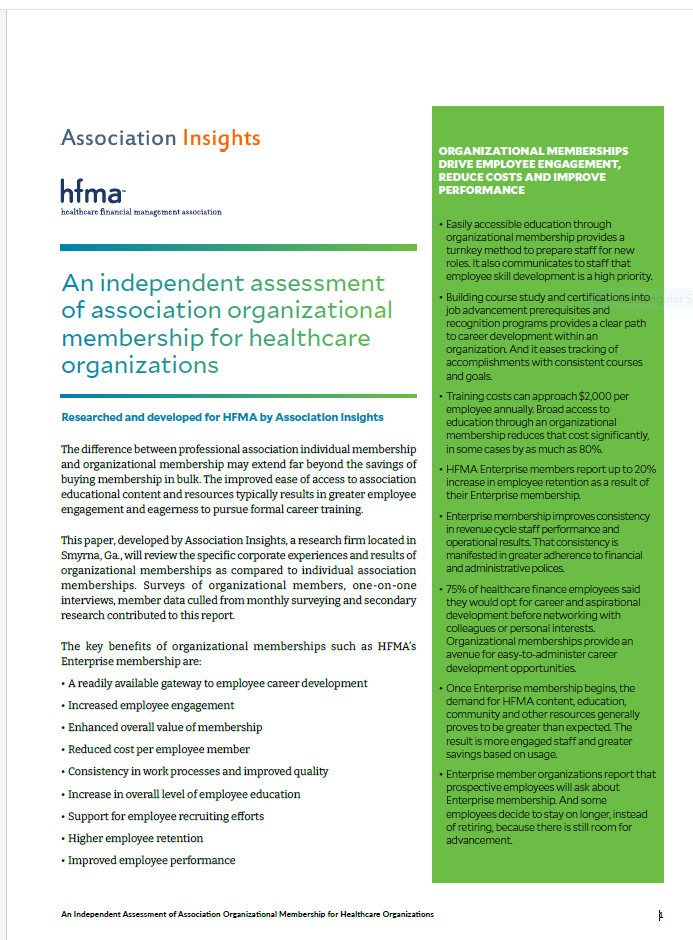HFMA Enterprise memberships drive engagement, retention, independent study finds

Organizational memberships drive employee engagement, provide clear career development paths and reduce turnover, according to results published in an independent study commissioned by HFMA. Adding to the benefits of association organizational memberships that offer training and education versus a similar individual membership are the cost savings of buying in bulk, which can reduce training costs by as much as 80%.
The study results were summarized in a white paper, An independent assessment of association organizational membership for healthcare organizations, which was developed by the research company Association Insights, Smyrna, Georgia.
“The significant benefit of organizational membership is a stronger career foundation for employees, rooted in continuing and advancing career expertise and recognition,” the report states. “Organizational membership provides a structure for career advancement within healthcare finance through certifications.”
“One example of the effectiveness of this membership model is HFMA’s Enterprise Solutions program, introduced in 2018, when membership hovered around 40,000,” said Bill Casey, senior vice president of membership experience for HFMA. “In April, the Association’s 100,000th member joined the program, attesting to its appeal.”

Today, many of the organizations Casey speaks with are incorporating HFMA’s certification courses into the career paths established for employees.
“Especially during the pandemic, organizations were looking for solutions to build revenue cycle competencies among their teams,” Casey said. “What we’re finding is Enterprise members are highly engaged within their cohorts in our HFMA communities. This expands their knowledge, extending the benefits of membership beyond programs and certification.”
9 benefits of organizational memberships

In light of the ongoing healthcare workforce issues, such as difficulty in retaining and recruiting both clinical and administrative employees, the study results are promising, said Rich Lucas, HFMA’s director of member channel assets.
The study found nine key benefits of organizational memberships:
- Creating gateways to employee career development
- Increasing employee engagement
- Enhancing the overall value of membership
- Reducing cost per employee member
- Developing consistency in work processes and improved quality
- Elevating the overall level of employee education
- Supporting employee recruitment efforts
- Raising employee retention (survey respondents reported staff retention increases of 20%)
- Improving employee performance
“The tangible benefits of the program underscore the value of this type of membership for organizations,” Lucas said.
Study methodology
The results of this independent study are based on two online surveys of 77 HFMA Enterprise member organizations’ program administrators (43 participants) and executives (34 participants), along with in-depth telephone interviews with three program executives representing Enterprise member organizations. The researchers also incorporated data from HFMA’s regular monthly and quarterly surveys of Enterprise members. The study was commissioned by HFMA to gauge how organizational memberships benefit organizations, using HFMA Enterprise membership as an example.
“We’ve seen the growth of our Enterprise Solutions organizational membership program over the past five years and heard about the value from members, but for full transparency, we wanted a third party to conduct the research and author the report,” said Lucas.
For more information
For full insight into the study results, download the white paper, An independent assessment of association organizational membership for healthcare organizations.





